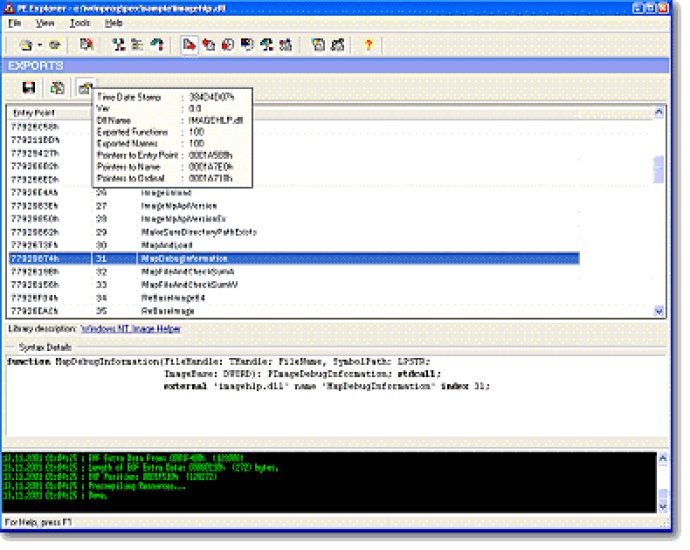PE Explorer simplifies the viewing, analysis, and editing of win32 executable files. It includes several tools such as a Win32 Disassembler, Visual Resource Editor, DLL Export Viewer, and UPX and Upack Unpackers for easy usage.

PE Explorer offers a wide range of features, such as a Visual Resource Editor, PE Header Viewer, UPX, NsPack and Upack Unpacker, Exported/Imported API Function Viewer, API Function Syntax Lookup, Digital Signature Viewer, Dependency Scanner, and a powerful Disassembler. The software allows users to peek inside Delphi applications and edit the properties of controls on Delphi forms within the PE file.
Once inside, users can analyze and optimize file structures, diagnose problems, make changes, and repair resources. Whether the user is an advanced computer user who is curious about how executable files work, or a software developer suffering from obscure program bugs, PE Explorer offers an easy and efficient solution.
PE Explorer enables users to view, edit, and repair internal structures of PE files with just the click of a button. It supports PE formats such as EXE, DLL, MSSTYLES, SYS, OCX, SCR, and other win32 executables. The software also offers support for custom plug-ins.
Users can use PE Explorer for serious development projects, restoring lost information, keeping damaged files intact, determining the existence of viruses or malicious code in the programs, reverse engineering projects with missing source code, viewing the imports/exports of the standard dll's, or for simply reducing the numerous internal information sources of PE files into a more convenient viewing format to save valuable time. The software offers an easy-to-use point-and-click approach to operate.
In conclusion, if you want to view, edit, and repair internal structures of PE files quickly and efficiently, then PE Explorer is the software that you are looking for. Try it out today and experience all the benefits it has to offer. For more information, visit their website.
Version 1.99 R6: Added the options to create the Windows 7 Compatibility and DPI-Aware sections in the Manifest Wizard, mark blocks as Byte, Word, DWord, QWord and GUID.